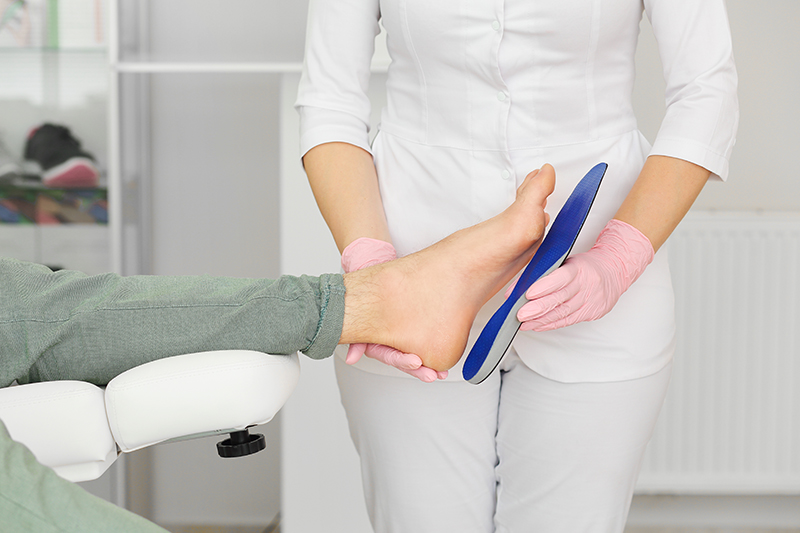
When you are at the podiatrist, the doctor can mold your feet and create custom orthotic inserts that you wear inside your shoes. The molds produce a custom map of your foot, allowing the doctor to get the right fit. Once the podiatrist has prepared the mold, they will either make a rigid or soft orthotic device, depending on your needs.
Types of Orthotics
There are two different types of orthotics consisting of functioning and accommodative orthotics. Functional orthotics, also called rigid orthotics, consist of plastic or carbon fiber. This form of orthotics fits into dress shoes and walking shoes. Functional orthotics relieve pain in the foot, back, and legs. On the other hand, accommodative orthotics, or soft orthotics, consist of soft compression materials. This form of orthotics takes the pressure off of sore spots. Athletes can purchase special orthotics for sporting equipment as well.
Conditions Orthotics Treat
The podiatrist may prescribe orthotics to treat a variety of issues. Some of these issues may consist of arthritis, osteoporosis, bunions, flat feet, etc. Arthritis and osteoporosis cause pain in the foot and poor positioning, which orthotics helps to correct. You can help back pain by use of orthotics. Bunions are the painful bump that develops at the base in the front of your foot at the big toe. Orthotics with a wide front portion can help reduce strain on the big toe. Flat feet cause foot, back, and ankle pain. Orthotics help support the feet and improve posture.
Orthotics Help with Physical Therapy
When you are recovering from ankle injuries, you need good orthotic support. The custom insoles will balance your body weight evenly between both of your feet. The orthotics prevent unnecessary changes to the alignment of your ankles, knees, and hips. Orthotics will also allow you to heal your body back to its original movement dynamics. Many different foot and ankle ailments require the use of orthotics to treat. Treatment and type of orthotics vary according to the specific disorder dealing with the foot and ankle. Depending on the type of activity there may be a certain orthotic that may be better than another. Visit your podiatrist if you are experiencing any pain or discomfort in order to see if a special orthotic



